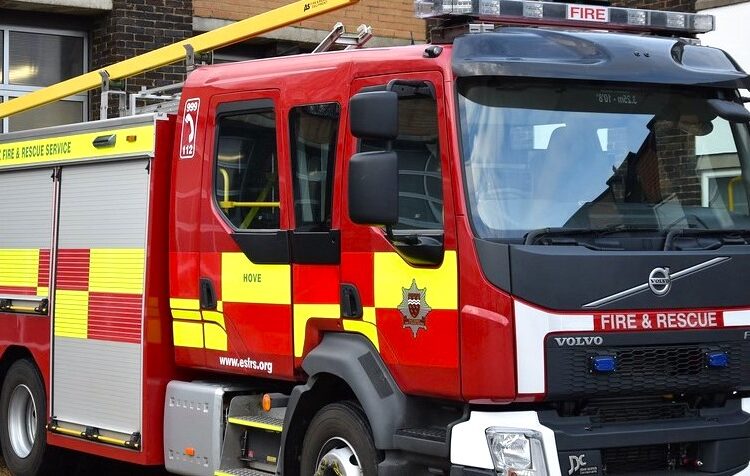Fire crews will no longer respond to most automated fire alarm call-outs from today (Monday 1 April), East Sussex Fire and Rescue Service said.
The fire service said that it was changing its response policy “to drive down the burden of false alarms”.
It said: “The service will no longer attend fire alarms operating in low-risk commercial premises at any time from Monday 1 April 2024 unless we receive telephone confirmation that there is a fire.
“Low-risk premises are classified as premises with no sleeping risk, such as offices, shops, schools, factories, pubs, clubs and restaurants.
“This is a change from our current policy where we attend outside of normal working hours and we are asking affected premises to take action now to make sure they are ready.
“This is the second phase of this work which is part of our ‘Integrated Risk Management Plan’ and was agreed by the fire authority after public consultation.
“The service averages around 10,000 operational responses to incidents each year. Automatic fire alarm systems account for 36 per cent of all these calls, of which a huge 97 per cent turn out to be false alarms.
“If the service attends the premises for this false alarm, it is subsequently classified as an unwanted fire signal.
“Of these calls, only 1.3 per cent in non-domestic premises turn out to be fires – an average of 20 per year.
“Thirteen of these do not require any firefighting action because the fire will already be out when the crews arrive.
“The majority of the others only require a minimum amount of action from our crews, ranging from an item being taken outside to the use of portable extinguishers.”
The fire service that these averages were based on figures from 2018-23 financial years.
The fire service said: “Inevitably, this causes significant disruption to our training, fire safety and community safety work and, crucially, while firefighters are investigating the cause of the alarm, they cannot attend emergencies where lives are at risk.
“If you are the ‘responsible person’ and have a legal responsibility to manage the fire protection measures in a building, failure to do so competently can lead to prosecution under the Regulatory Reform (Fire Safety) Order 2005.
“To help you prepare for this change, we recommend you
- Review the fire risk assessment and the emergency plan. It may need to be adapted to include a physical check of the area identified on the fire alarm panel, raising the alarm by calling 999 or resetting the automatic fire detection system. Some additional training for fire wardens / fire marshals might be required. Knowing how and when they communicate to the occupiers and when it is safe to return to the building will become part of their role.
- Let your staff know about the changes and any additional roles and responsibilities that they then might have if the fire alarm activates.
- Liaise with the fire alarm monitoring company to ensure that they are aware of the changes.
- Examine previous activations to see if changes might be beneficial in reducing the number of unwanted fire signals.
“Reducing unwanted fire signals will not necessarily reduce the number of false alarms and we know that, even if we never attend, your staff could become complacent.
“For example, a smoke detector positioned outside the changing rooms of a gym is set off regularly due to steam from the showers.
“Staff and gym users may start to ignore the alarm and staff may reset the system without checking the cause. There is therefore, the potential for a fire to spread unchecked.”









What are we paying for when the fire brigade don’t turn out for fire alarms and police don’t respond to reposted crime and doctors wont see you until you’re too sick for treatment.
We pay for these things for OUR service in not their convenience.
Reading into this, because the headline did lead me to a slightly more heightened opinion initially. It makes sense. I’m aware of a community hall in Hove, that tends to get a fair few false alarms, usually, it’s just something left on a stove for too long or an oversensitive sensor placed really close to the aforementioned. Having to attend that every time is a burden, particularly when it’s unlikely there is a risk of a hidden fire, or where the trigger is easily identified.
Not to mention the risk of driving a C-class vehicle under emergency conditions, lest we forget, we’ve had several injuries unfortunately from blue light runs from emergency vehicles.